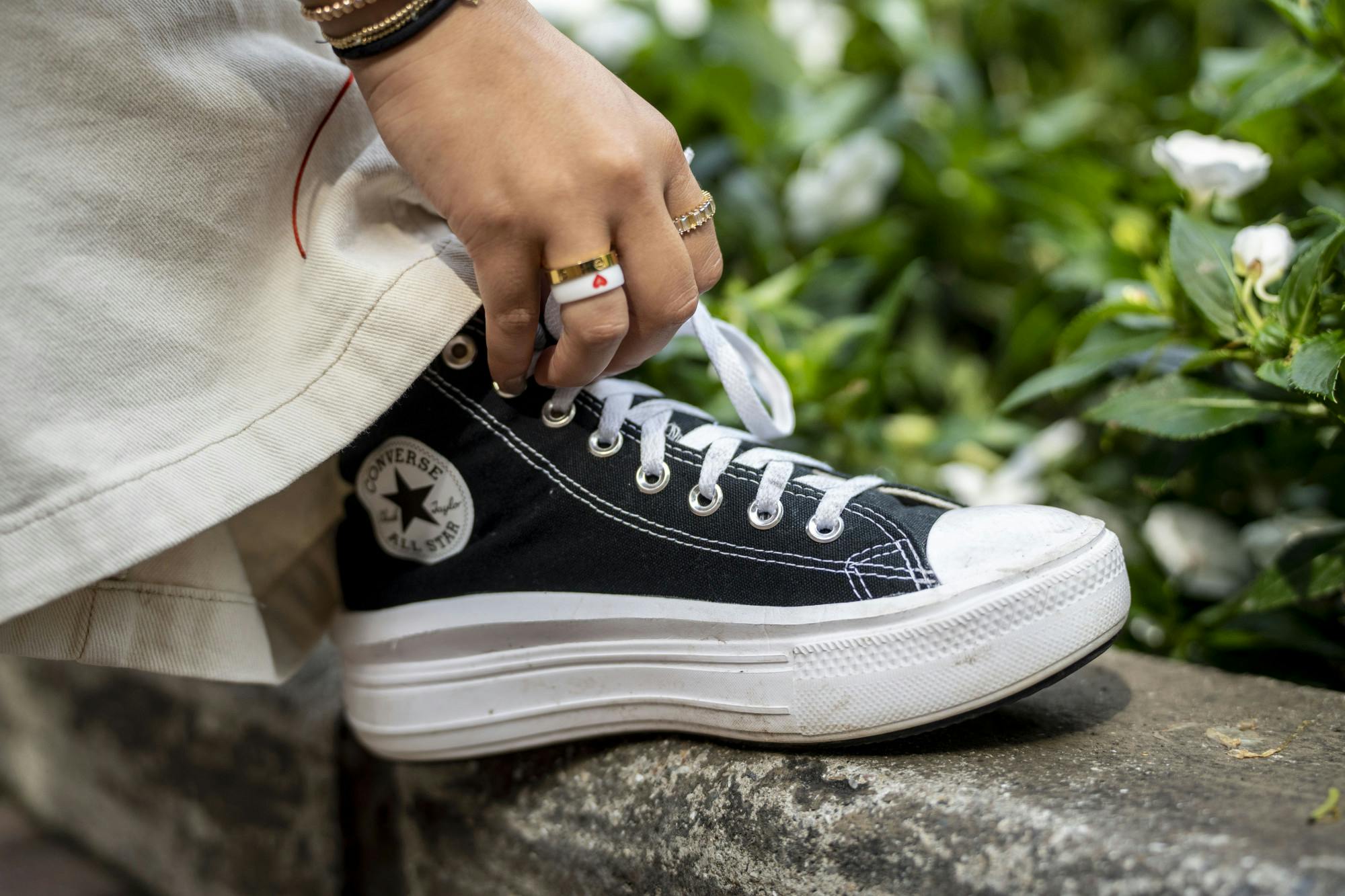Sustainable fashion doesn’t have to break the bank. If you are looking to be more environmentally conscious without spending a fortune, look no further.
A broke college student's guide to shopping sustainable fashion

Visiting a local thrift store is one of the most popular ways to shop sustainably. Thrift stores provide access to large selections of secondhand clothing for low prices, and give old clothes a new home, preventing them from ending up in landfills.
“I really like (to thrift) because it’s not only super affordable, but it’s also really good for the environment,” environmental engineering sophomore Serena Westcott said. “There’s always good options you can find if you look hard enough.”
Shopping at a thrift store can be a larger time commitment and require a little bit of digging. However, satisfaction of discovering the perfect outfit from the racks of clothing can be an incredibly rewarding experience.
Thrift stores also end up with a wide range of items from decades past, that have stood the test of time. Psychology sophomore Nikki Vawter said her favorite thrift find is a pair of vintage Levi jeans.
There are several thrift stores in the East Lansing area including Goodwill, Kellie's Consignments and St. Vincent De Paul – just to name a few.
Use a clothing resale app
Nowadays, it's easy to shop secondhand from the comfort of your home. Apps like Depop, Mercari and Poshmark allow you to buy new-used clothing and sell items you want to let go of.
Use a careful eye when using resale apps, however. Some sellers thrift clothing and sell them on apps for a higher price, Vawter said, which can make finding budget-friendly items tricky.
Pay attention to how your clothing is made
When shopping sustainably, it is important to not only pay attention to where you shop, but also what you are shopping for. Not all clothes are created equally.
Another way to practice sustainability is to choose clothes made out of sustainable, ethically sourced materials that will last for a longer duration of time.
“Synthetic fibers aren’t going to last as long as non-synthetics,” said journalism and apparel and textiles senior Borjana Alia. “I like to look for cotton stuff rather than … spandex, nylon, stuff that isn’t going to last as long. So definitely more natural fibers are what you want to look out for.”
READ MORE
Non-synthetic fibers, also known as natural fibers, are made from either animal or plant-based materials. Natural fibers to look out for while shopping includes cotton, bamboo, silk and wool.
Natural fibers typically pass the test of sustainability because they usually do not require the addition of chemicals to produce and decompose faster than synthetic materials.
Natural fibers are also typically more biodegradable than synthetic fibers. For example, a 100% cotton t-shirt will take about five months to decompose, compared to a pair of nylon tights, which could sit in a landfill for 30 to 40 years before decomposition.
Beware of 'greenwashing'
Remember to do your research before trusting that a brand is environmentally friendly. And be on the lookout for 'greenwashing' – a term used to describe the act of companies falsely advertising their products as being environmentally conscious, despite having harmful effects.
'Greenwashing' is especially prevalent in the fashion industry, with brands like H&M running into legal trouble for partaking in this phenomenon.
Support student media! Please consider donating to The State News and help fund the future of journalism.
Fast fashion can be extremely tempting and if you're trying to save money, it's easy to fall victim to it. However, if you're careful about what you purchase, shopping sustainability can be just as budget-friendly.

